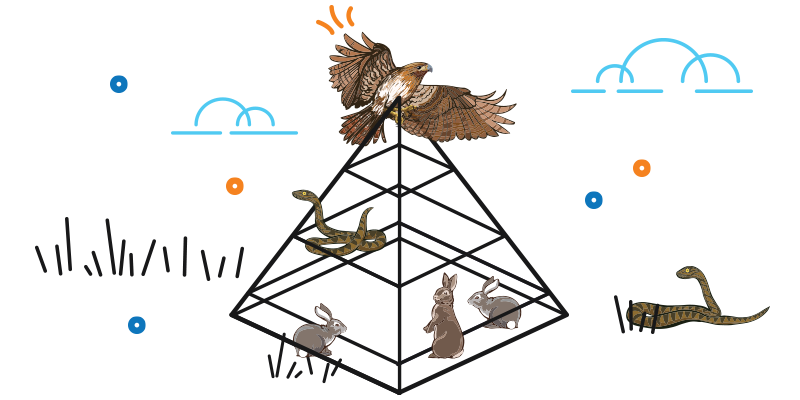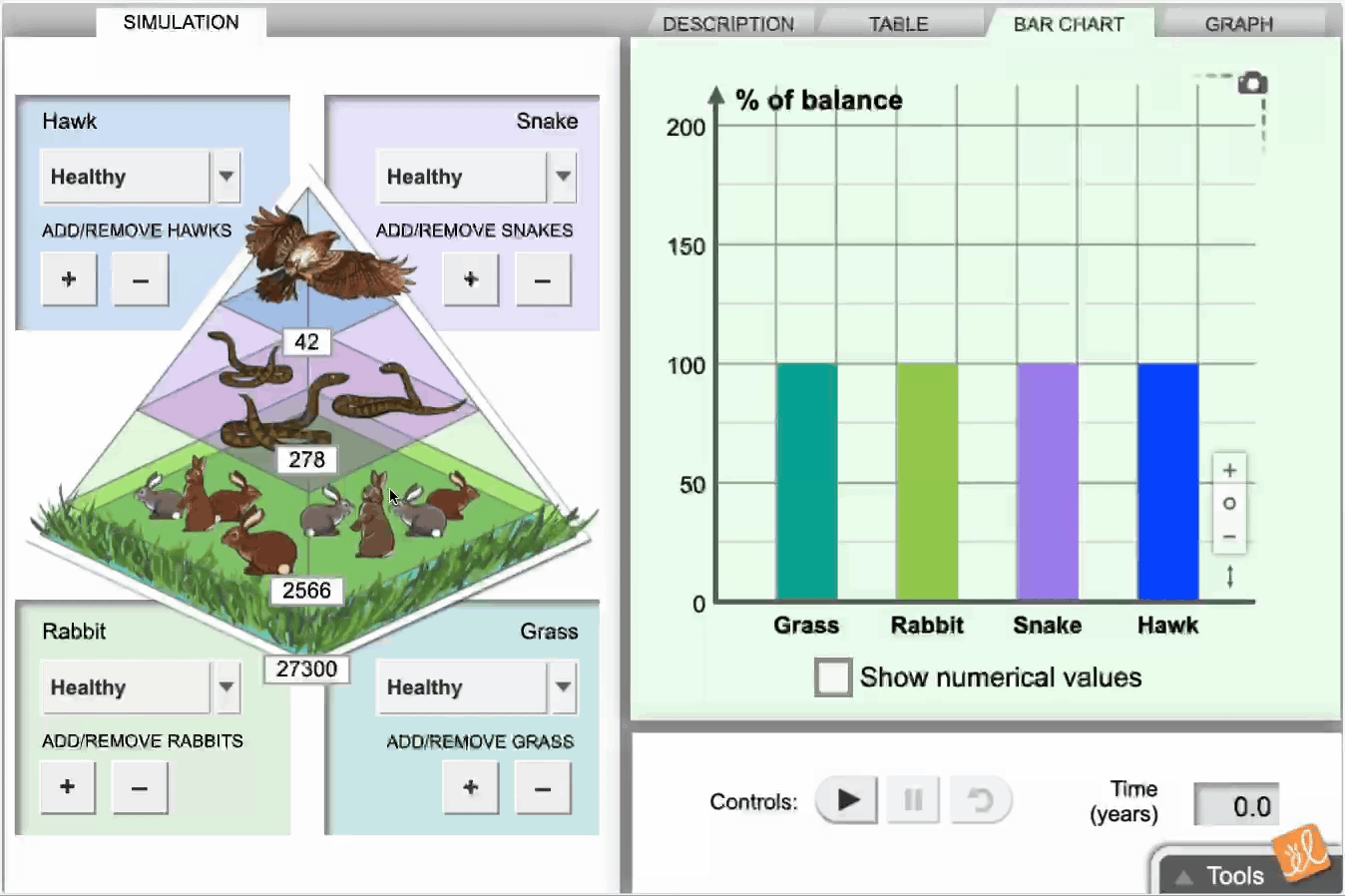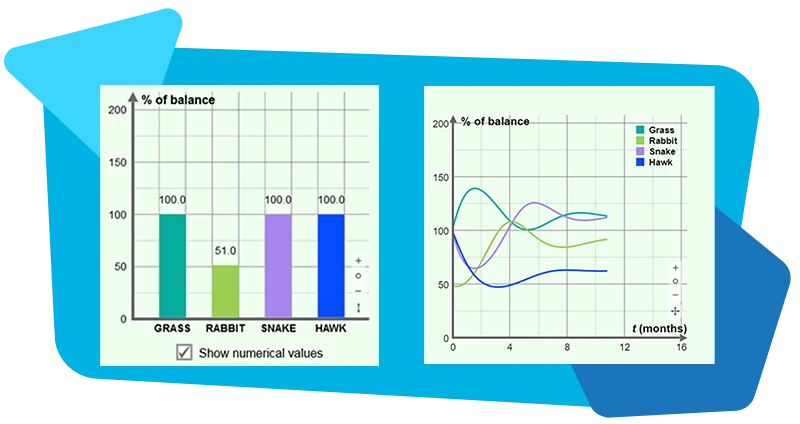
On the surface, it seems pretty straightforward. A food chain explains the flow of energy and nutrients through an ecosystem. But there’s so much more.
Elementary teachers introduce the food chain, followed by the food web concept. Middle school and high school teachers build on those concepts and transition into photosynthesis and energy transfer.
Ready to elevate your science lessons?
Gizmos Investigations are now available! These interactive, scaffolded science lessons combine Gizmo simulations with built-in student questioning and just-in-time feedback to support sensemaking practices. Designed to meet next-generation science standards, they help all students actively engage in the doing of science. Explore how Gizmos Investigations can transform your classroom today!
What is a food chain?
The food chain is about a sequence of events. Think of it as who eats whom in an ecosystem, as one living organism is consumed by a larger organism throughout the order of events.
Let’s examine a sample food chain. Start with a grasshopper eating plants. A mouse eats the grasshopper. That mouse is eaten by a snake, followed by an eagle devouring the snake. When the eagle dies, fungi break down the body and turn it into nutrients.
The roles of producers and consumers in the food chain
Each plant and animal in the food chain has a role, which also becomes a new vocabulary term to learn.
- Producers are organisms that produce their own food through photosynthesis.
- Primary producers, such as algae, plants, or cyanobacteria, are the base of the food chain.
- Consumers are living creatures that eat organisms from different populations to get their energy.
- Primary consumers, like butterflies or rabbits, are usually herbivores but could also eat algae or bacteria. These consumers eat the primary producers.
- Secondary consumers, usually carnivores, eat the primary consumers. Bears eating deer or birds eating insects are just two examples.
- Decomposers, such as fungi and bacteria, play a vital role in the health of any ecosystem. When organisms die, decomposers break down organic materials into basic components. These components are returned to the soil, where plants can reuse them.
- Tertiary consumers or apex predators consume both primary and secondary consumers. These are carnivores eating carnivores at the top of the food chain. Think of sharks, polar bears, and crocodiles.

Food chain vs. food web: What’s the difference?
Food chains and food webs aren’t interchangeable terms. What about the food chain vs food web? Both involve relationships between organisms and the ways energy is transferred in an ecosystem. However, a food chain is a single path of energy flow, while the food web represents the transfer of energy throughout the entire community within an ecosystem.
How to make a food web
A group of food chains within an ecosystem make up a food web. Students need to focus on a specific ecosystem to represent an interactive food web. Give students a large piece of paper. Ask them to write or draw the plants and animals in that environment. They can draw arrows to what eats each organism and label them as producers, consumers, or decomposers. They could also name them as predator or prey.
Why is understanding the food chain important for children?
The food chain is a critical concept in the science curriculum, but why is the food chain important for kids? Following the sequence of events in a food chain example helps children understand that living things are connected. Food chain activities show a progression in the circle of life. The ways human interactions can affect the environment can also be illustrated through the food chain for kids.
Creative activities to teach the food chain to kids
Food chain lesson plan ideas easily lend themselves to cross-curricular activities. What are the lesson objectives for teaching food chains? That will vary in depth by grade level, but they all spotlight producers, consumers, decomposers, effects of changes to an ecosystem, and the role of the sun as an energy source. Take a look at a few ways to bring the food chain to life in your classroom.
- Start with literature- There are many children’s books with this theme. Choose one to read aloud as an introduction to the concept.
- Make a chain- Cut strips of paper. Ask students to draw or write the names of different plants and animals, one per strip. Glue them together in loops to make an example of a food chain.
- Stack the cups- Ask students to write or draw different plants or animals on paper or styrofoam cups. Students can stack their cups to show a food chain from beginning to end.
- Walk the food chain- Teachers print pictures of plants and animals and arrange them on the ground. Students walk the path of a food chain by selecting the images in the sequence.
- Eat the food chain- This requires small animal-shaped candies, crackers, or even cereal pieces and seeds to represent different parts of the food chain. Think gummy frogs or sharks and animal crackers. Make sure to work within any food limitations or allergies for your class. Students construct a food chain with the treats. After sharing it, they can eat the food chain!
Using Gizmos to teach the food chain
A Gizmos virtual lab is an excellent way to teach the food chain. In the Food Chain Gizmo, students explore an ecosystem of hawks, snakes, rabbits, and grass. Disease can be introduced for any species, and the number of animals can be increased or decreased at any time, just like in the real world.

This Gizmo explores the food chain and allows students to make changes to each part of the chain. They can then investigate how these changes affect the balance of the ecosystem.

Our literacy connection choice is The Magic School Bus Gets Eaten: A Book About Food Chains by Patricia Relf. You’ll find activities ready to use with the Gizmo. Explore ecosystems with the Prairie Ecosystem and the Forest Ecosystem Gizmos where students can observe different populations and investigate feeding relationships.
With Gizmos, teaching about the Food Chain has never been easier. Browse some popular Gizmos collections and think what a Gizmos trial could mean for other concepts. Start your trial today!
